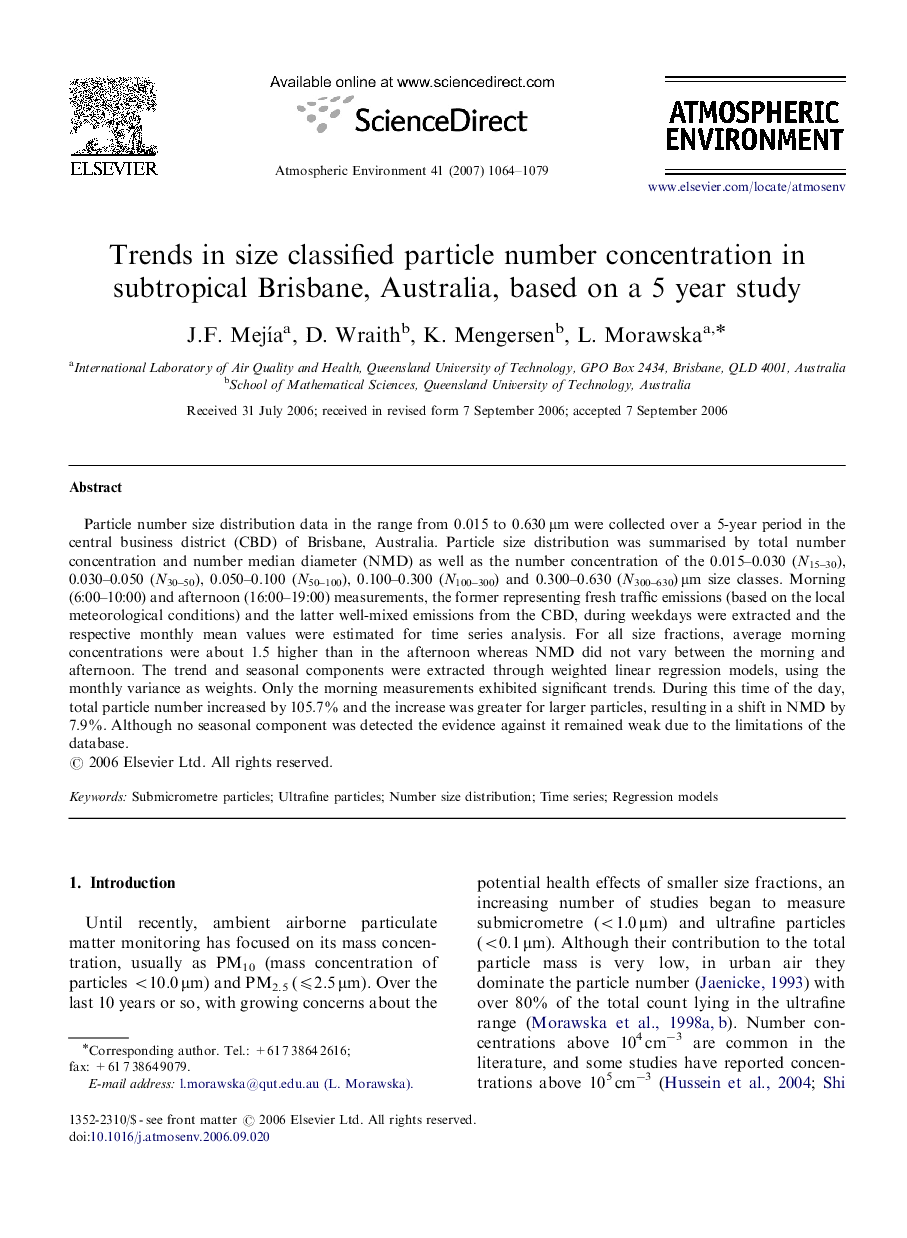| Article ID | Journal | Published Year | Pages | File Type |
|---|---|---|---|---|
| 4443080 | Atmospheric Environment | 2007 | 16 Pages |
Particle number size distribution data in the range from 0.015 to 0.630 μm were collected over a 5-year period in the central business district (CBD) of Brisbane, Australia. Particle size distribution was summarised by total number concentration and number median diameter (NMD) as well as the number concentration of the 0.015–0.030 (N15–30), 0.030–0.050 (N30–50), 0.050–0.100 (N50–100), 0.100–0.300 (N100–300) and 0.300–0.630 (N300–630) μm size classes. Morning (6:00–10:00) and afternoon (16:00–19:00) measurements, the former representing fresh traffic emissions (based on the local meteorological conditions) and the latter well-mixed emissions from the CBD, during weekdays were extracted and the respective monthly mean values were estimated for time series analysis. For all size fractions, average morning concentrations were about 1.5 higher than in the afternoon whereas NMD did not vary between the morning and afternoon. The trend and seasonal components were extracted through weighted linear regression models, using the monthly variance as weights. Only the morning measurements exhibited significant trends. During this time of the day, total particle number increased by 105.7% and the increase was greater for larger particles, resulting in a shift in NMD by 7.9%. Although no seasonal component was detected the evidence against it remained weak due to the limitations of the database.
